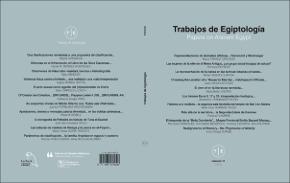El acto sexual como agente del (re)nacimiento de Osiris
Autor
Orriols-Llonch, MarcFecha
2020Resumen
Uno de los mitos más importantes de la civilización del antiguo Egipto es el llamado ciclo mítico de Osiris. Pese a que no se le ha prestado especial atención, uno de los mitemas más importantes es el acto sexual entre el dios e Isis. Este establece dos pilares de la civilización del antiguo Egipto: la concepción y posterior nacimiento de Horus (el arquetipo del rey terrenal egipcio) y el (re)nacimiento de Osiris (rey del Más allá y arquetipo de los difuntos).
A pesar de la gran importancia de este acto sexual, las fuentes que lo registran son relativamente escasas. A nivel textual, el coito entre ambas divinidades se documenta desde los Textos de las pirámides hasta finales del período faraónico. Aunque en muy pocos casos aparece relatado con verbos con significado sexual explícito, el contexto permite ver que, efectivamente, los protagonistas están manteniendo una relación sexual. Como no puede ser de otra manera, ya que Osiris está muerto, Isis es la agente de la acción, una excepcionalidad más de diosa que la diferencia del resto de sus congéneres. En cuanto a la iconografía, tan sólo se documentan tres imágenes en el período dinástico: una del Reino Medio y dos del Reino Nuevo. En todas ellas la imagen es exactamente la misma, Osiris, antropomorfo, yace en su lecho funerario mientras que Isis copula con él en forma de ave rapaz. One of the most important myths of the Ancient Egypt civilization is Osiris’ cyclical myth. Even though not enough attention has been given to it, one of the most important mythemes is the sexual act between the god and Isis. This sexual act establishes two pillars of the monarchy in Ancient Egypt: the conception and the subsequent birth of Horus (the archetype of the earthly Egyptian king) and Osiris’ (re)birth (king of the Underworld and archetype of the dead).
Regardless of the great importance of this sexual act, the sources that relate to it are scarce. On a textual level, the intercourse between both divinities has been documented since the Pyramid Texts until the end of the Pharaonic Period. However, it appears narrated on very few occasions with verbs carrying explicit sexual meaning. Only the context allows one to see that the protagonists are having sexual relations. Since Osiris is dead, Isis is the obvious agent of the action, an exception that makes the goddess different from the rest of her peers. Regarding iconography, only three images have been documented in the Dynastic Period: one in the Middle Kingdom and two in the New Kingdom. In all of them the image is the same, the anthropomorphic Osiris, lies in his funerary bed while Isis, in the shape of a bird of prey, copulates with him.





